December 1, 2022 -- Cheyenne To Laramie
- Lucian@going2paris.net

- Dec 1, 2022
- 13 min read

Fairfield Inn
Laramie, Wyoming
December 1, 2022
Big move today! Snow makes photography tough; I give myself a B- for the quality of these photos.
Cheyenne (/ʃaɪˈæn/ shy-AN or /ʃaɪˈɛn/ shy-EN) is the capital and most populous city of the U.S. state of Wyoming, as well as the county seat of Laramie County, with 65,132 residents, per the 2020 US Census. It is the principal city of the Cheyenne metropolitan statistical area which encompasses all of Laramie County and had 100,512 residents as of the 2020 census. Local residents named the town for the Cheyenne Native American people in 1867 when it was founded in the Dakota Territory.
Cheyenne is the northern terminus of the extensive Southern Rocky Mountain Front, which extends southward to Albuquerque, New Mexico, and includes the fast-growing Front Range Urban Corridor. Cheyenne is situated on Crow Creek and Dry Creek.
History
At a celebration on July 4, 1867, Grenville M. Dodge of the Union Pacific Railroad announced the selection of a townsite for its mountain region headquarters adjacent to the bridge the railroad planned to build across Crow Creek in the Territory of Dakota. At the same celebration, Major General Christopher C. Augur announced the selection of a site three miles west of Crow Creek Crossing for a U.S. Army fort to protect the railroad.
The Union Pacific Railroad platted its Crow Creek Crossing townsite on July 5, 1867. Residents named the town Cheyenne for the Cheyenne Native American people. On August 8, 1867, the Town of Cheyenne, Dakota Territory was incorporated, and on August 10, 1867, H. M. Hook was elected as Cheyenne's first mayor. The tracks of the Union Pacific Railroad reached Cheyenne on November 13, 1867, and the first train arrived the following day. Cheyenne grew so quickly it gained the nickname of "Magic City of the Plains".
On September 8, 1867, the United States Army established Fort D.A. Russell in honor of Brigadier General David Allen Russell. Initially a cavalry encampment, construction of the fort began the following month. The fort was renamed Fort Francis E. Warren in 1930 in honor of the first Governor of the State of Wyoming, Francis E. Warren. The fort was transferred to the new United States Air Force and was renamed Francis E. Warren Air Force Base in October 1949.
On July 25, 1868, the United States organized the Territory of Wyoming. Territorial Governor John Allen Campbell arrived in Cheyenne on May 7, 1869, and named Cheyenne the temporary territorial capital. Cheyenne has remained the only capital of Wyoming. On December 10, 1869, the first session of the Wyoming Territorial Legislature met in Cheyenne. That day, the legislature passed and Territorial Governor Campbell signed an act to re-incorporate the Town of Cheyenne, Wyoming Territory, and an act granting white women the right to vote, the first U.S. state or territory to grant suffrage to women.
On July 10, 1890, the Territory of Wyoming was admitted to the Union as the State of Wyoming. The Wyoming State Capitol was constructed between 1886 and 1890, with further improvements being completed in 1917.
The Cheyenne Regional Airport was opened in 1920, initially serving as a stop for airmail. It soon developed into a civil-military airport, serving DC-3s and various military craft. During World War II, hundreds of B-17s, B-24s, and PBYs were outfitted and upgraded at the airfield. Today, it serves a number of military functions, and as a high-altitude testbed for civilian craft.
Geography
Lying near the southeast corner of the state, Cheyenne is one of the least centrally located state capitals in the nation (together with cities such as Carson City, Nevada; Juneau, Alaska; Tallahassee, Florida; and Topeka, Kansas).
Cheyenne, like much of Wyoming, has a cold semi-arid climate (Köppen BSk) and is part of USDA Hardiness zone 5b, with the suburbs falling in zone 5a. Winters are cold and moderately long, but relatively dry with highs often above freezing, having a normal mean temperature of 27.7 °F (−2.4 °C), highs that fail to breach freezing for 35 days per year, and lows that dip to the 0 °F (−18 °C) mark on 9.2 mornings. However, the cold is often interrupted, with chinook winds blowing downslope from the Rockies that can bring warm conditions, bringing the high above 50 °F on twenty days from December to February.
While December is the coldest month, snowfall is greatest in March and April, seasonally averaging 60 inches, historically ranging from 13.1 inches between July 1965 and June 1966 up to 121.5 inches between July 1979 and June 1980, yet thick snow cover rarely stays. Summers are warm, with a high diurnal temperature range; July averages 69.4 °F (20.8 °C), and highs reach 90 °F (32 °C) on average for twelve afternoons annually. Spring and autumn are quick transitions, with the average window for freezing temperatures being September 29 thru May 14, allowing a growing season of 106 days. Official record temperatures range from −38 °F (−39 °C) on January 9, 1875, up to 100 °F (38 °C) on June 23, 1954, the last of four occurrences; the record cold daily maximum is −21 °F on January 11, 1963, while, conversely, the record warm daily minimum is 68 °F (20 °C) on July 31, 1960.
The annual precipitation of 15.9 inches tends to be concentrated from May to August and is low during fall and winter; it has historically ranged from 5.04 inches in 1876 to 23.69 inches in 1942.
The city averages below 60% daily relative humidity in each month and receives an average 2,980 hours (~67% of the possible total) of sunshine annually. On July 16, 1979, an F3 tornado struck Cheyenne, causing one death and 40 injuries.
Demographics

In 2020, Cheyenne had a total population of 65,132. As of the census of 2010, there were 59,467 people, 25,558 households, and 15,270 families living in the city. There were 27,284 housing units at an average density of 1,112.7 per square mile (429.6/km2). As of the census of 2000, there were 53,011 people, 22,324 households, 14,175 families living in the city, and 81,607 people living in the metropolitan statistical area making it the largest city and metropolitan area in the state of Wyoming. The population density was 2,511.4 inhabitants per square mile (969.6/km2). There were 23,782 housing units at an average density of 1,126.7 per square mile (435.0/km2).
At the 2019 American Community Survey, the city had an owner-occupied housing rate of 65.9% with a median value at $214,300. There were 27,344 households from 2015 to 2019, and an average of 2.20 persons per household.[30] Residents of Cheyenne had a median household income of $64,598 and per capita of $35,637. An estimated 10.4% lived at or below the poverty line.
The U.S. Census Bureau estimated the racial and ethnic makeup of the city was 77.1% non-Hispanic white, 1.7% Black or African American, 0.6% American Indian or Alaska Native, 1.5% Asian, 0.2% Native Hawaiian or other Pacific Islander, 6.7% two or more races, and 15.9% Hispanic or Latin American of any race, in 2020.
Laramie /ˈlærəmi/ is a city in and the county seat of Albany County, Wyoming. The population was estimated 32,711 in 2019, making it the third-largest city in Wyoming after Cheyenne and Casper. Located on the Laramie River in southeastern Wyoming, the city is north west of Cheyenne, at the junction of Interstate 80 and U.S. Route 287.
Laramie was settled in the mid-19th century along the Union Pacific Railroad line, which crosses the Laramie River at Laramie. It is home to the University of Wyoming, WyoTech, and a branch of Laramie County Community College. Laramie Regional Airport serves Laramie. The ruins of Fort Sanders, an army fort predating Laramie, lie just south of the city along Route 287. Located in the Laramie Valley between the Snowy Range and the Laramie Range, the city draws outdoor enthusiasts with its abundance of outdoor activities.
In 2011, Laramie was named as one of the best cities in which to retire by Money Magazine, which cited its scenic location, low taxes, and educational opportunities.
History
Laramie was named for Jacques LaRamie, a French or French-Canadian trapper who disappeared in the Laramie Mountains in the early 1820s and was never heard from again. He was one of the first Europeans to visit the area. European-American settlers named a river, mountain range, peak, US Army fort, county, and city for him. More Wyoming landmarks are named for him than for any other trapper but Jim Bridger. Because the name was used so frequently, the town was called Laramie City for decades to distinguish it from other uses.
The city was founded in the mid-1860s as a tent city near the Overland Stage Line route, the Union Pacific portion of the first transcontinental railroad, and just north of Fort Sanders army post. The rails reached Laramie on May 4, 1868 when construction crews worked through town. A few passengers arrived on that same day. The first regular passenger service began on May 10, 1868, by which time entrepreneurs were building more permanent structures. Laramie City (as it was known in early years) soon had stores, houses, a school, and churches. Laramie's fame as the western terminal of the Union Pacific Railroad, acquired when the 268-mile section from North Platte, Nebraska was opened in May, ended in early August 1868 when a 93-mile section of track was opened to Benton, 6 miles east of present-day Sinclair, Wyoming.
The frontier town initially suffered from lawlessness. Its first mayor, M. C. Brown, resigned his office on June 12, 1868 after six turbulent weeks, saying that the other officials elected alongside him on May 2 were guilty of "incapacity and laxity" in dealing with the city's problems. This was due to the threat to the community from three half-brothers, early Old West gunman "Big" Steve Long, Con Moyer and Ace Moyer. Long was Laramie's first marshal, and with his brothers owned the saloon Bucket of Blood. The three began harassing settlers, forcing them to sign over the deeds to their property to them. Any who refused were killed, usually goaded into a gunfight by Long. By October 1868, Long had killed 13 men.
The first Albany County sheriff, rancher N. K. Boswell, organized a "Vigilance Committee" in response. On October 28, 1868, Boswell led the committee into the Bucket of Blood, overwhelmed the three brothers, and lynched them at an unfinished cabin down the street. Through a series of other lynchings and other forms of intimidation, the vigilantes reduced the "unruly element" and established a semblance of law and order.
In 1869, Wyoming was organized as Wyoming Territory, the first legislature of which passed a bill granting equal political rights to women in the territory. In March 1870, five Laramie residents became the first women in the world to serve on a jury.[13] As Laramie was the first town in Wyoming to hold a municipal election, on September 6, 1870, Laramie resident Louisa Swain was the first woman in the United States to cast a legal vote in a general election.
Early businesses included rolling mills, a railroad-tie treatment plant, a brick yard, a slaughterhouse, a brewery, a glass manufacturing plant, and a plaster mill, as well as the railroad yards. In 1886, a plant to produce electricity was built. Several regional railroads were based in Laramie, including the Laramie, North Park and Pacific Railroad and Telegraph Company founded in 1880 and the Laramie, North Park and Western Railroad established in 1901.
Governor Francis E. Warren signed a bill that established the University of Wyoming (UW) in 1886, the only public university in the state. Laramie was chosen as its site, and UW opened there in 1887. Under the terms of the Morrill Act, also known as the Land Grant College Act, in 1891 UW added an agricultural college and experiment station to gain benefits as a land grant college.
Late 20th century to present
The city was covered by international media in 1998 after the murder of Matthew Shepard, who was a gay student at the University of Wyoming. His murder generated an international outcry. It became the symbolic focus for a nationwide campaign against gay hate crimes. Federal hate crimes legislation was signed into law in 2009. As of September 2021, Wyoming does not have a hate crimes law, having failed to pass its most recent attempt at a hate crimes law in March 2021. Shepard's murder was the subject of the award-winning play, later adapted as a movie, The Laramie Project.
In 2004, Laramie became the first city in Wyoming to pass a law to prohibit smoking in enclosed workplaces, including bars, restaurants and private clubs. Opponents of the clean indoor air ordinance, funded in part by the R.J. Reynolds Tobacco Company, immediately petitioned to have the ordinance repealed. However, the voters upheld the ordinance in a citywide referendum which was conducted concurrently with the 2004 general election. The opponents challenged the validity of the election in court, claiming various irregularities. However, the judge ruled that the opponents had failed to meet their burden of showing significant problems with the election, and the ordinance, which had become effective in April 2005, remained in effect. In August 2005, Laramie's City Council defeated an attempt to amend the ordinance to allow smoking in bars and private clubs.
Geography
Laramie is on a high plain between two mountain ranges, the Snowy Range, about 30 miles ( to the west, and the Laramie Range, 7 miles to the east. The city's elevation above sea level is approximately 7,165 feet. The Laramie River runs through Laramie toward its confluence with the North Platte River east of the Laramie Range.
The city is about 50 miles west of Cheyenne, and 130 miles north of Denver, Colorado. Laramie lies along U.S. Route 30, Interstate 80, and U.S. Route 287, and it remains an important junction on the Union Pacific Railroad line.
Climate
Laramie's total precipitation averages about 11 inches (279 mm) a year, and the average number of rainy days per year is about 86. The city experiences a day that is 90 °F (32 °C) or warmer 2.2 times a year. The average temperature in December is 21.1 °F (−6.1 °C), and in July it is 64.0 °F (17.8 °C). Annual snowfall averages 48 inches (122 cm). Because of the high elevation, winters are long, and summers are short and relatively cool. The growing season is short, as the average window for freezing temperatures is September 14 through June 6, while for accumulating (≥0.1 inches (2.5 mm)) it is October 5 through May 12.
Laramie has a semi-arid climate (Köppen climate classification BSk) with long, cold, dry winters and short, warm, somewhat wetter summers.
2010 census

As of the census of 2010, there were 30,816 people, 13,394 households, and 5,843 families residing in the city. The population density was 1,737.1 inhabitants per square mile (670.7/km2). There were 14,307 housing units at an average density of 806.5 per square mile (311.4/km2). The racial makeup of the city was 89.5% White, 3.2% Asian, 2.8% from two or more races, 2.5% from other races, 1.3% African American, 0.7% Native American, and 0.1% Pacific Islander. 9.2% of residents were Hispanic or Latino of any race.
There were 13,394 households, of which 20.4% had children under the age of 18 living with them, 33.0% were married couples living together, 6.9% had a female householder with no husband present, 3.7% had a male householder with no wife present, and 56.4% were non-families. 36.9% of all households were made up of individuals, and 6.2% had someone living alone who was 65 years of age or older. The average household size was 2.14 and the average family size was 2.85.
The median age in the city was 25.4 years. 15.9% of residents were under the age of 18; 32.7% were between the ages of 18 and 24; 26.5% were from 25 to 44; 17.4% were from 45 to 64; and 7.5% were 65 years of age or older. The gender makeup of the city was 52.0% male and 48.0% female.
Sports[edit]
College[edit]
The University of Wyoming Cowboys compete at the NCAA Division I level (FBS-Football Bowl Subdivision for football) as a member of the Mountain West Conference. UW offers 17 NCAA-sanctioned sports teams – nine women's sports and eight men's sports. Wyoming's nine NCAA sports for women include basketball; cross country; golf; soccer; swimming and diving; tennis; indoor track & field; outdoor track and field; and volleyball. UW's eight NCAA sports for men include basketball; cross country; football; golf; swimming and diving; indoor track and field; outdoor track and field; and wrestling.
Outdoor
Sports enthusiasts find much to do in and near Laramie, nestled between the Laramie Range (Laramie Mountains) and the Snowy Range (Medicine Bow Mountains). Popular activities include skiing, snowmobiling, mountain biking, hunting, fishing, and hiking.
Rock climbing, hiking, and camping are among the attractions of Vedauwoo, an assemblage of weathered granite slabs, boulders, and cliffs covering 10 square miles (26 km2) in the Medicine Bow – Routt National Forest, about 16 miles (26 km) east of Laramie off Interstate 80.
Volunteers from the Medicine Bow Nordic Association, in cooperation with the Forest Service, maintain groomed cross-country ski trails in a sector of the Laramie Range about 10 miles (16 km) east of the city. To the west, Snowy Range cross-country trails run through the national forest west of Centennial, and other trails follow gentle terrain 32 miles (51 km) southwest of Laramie near Woods Landing. Miles of snowmobile trails wind through the forests, and many forest areas are open to travel by snowshoe.[43] The Snowy Range Ski Area, about 30 miles (48 km) west of Laramie off Wyoming Highway 130, offers downhill skiing and snowboarding on 27 trails ranging in difficulty from beginner to expert.
Laramie is a center for mountain biking. Mountain bike trails meander through forests in the Laramie Range and the Snowy Range. The Medicine Bow Mountain Bike Patrol, part of the Laramie Bicycling Network, is a non-profit volunteer organization that works with the Forest Service to patrol and maintain biking trails east of Laramie. The Medicine Bow Rail–Trail is a mountain bike trail, 21 miles (34 km) long, built between 2005 and 2007 on the bed of an abandoned railroad southwest of Laramie. It starts near the town of Albany and Lake Owen and extends south to the town of Mountain Home near the Wyoming–Colorado border. The Laramie Enduro 111K, an endurance mountain bike race of 111 kilometres (69 mi) is held annually on Laramie Range trails.
Other annual events include the Poker Run recreational ski race held in the Snowy Mountains each February, and the Tour De Laramie, a bicycle rally with stops at local pubs held in May. The Wyoming Marathon Races, a series of running and ultra-running events held in Medicine Bow National Forest, are held annually each Memorial Day weekend.
Trout fishing is another popular sport in and near Laramie. The Laramie River, which flows north into Wyoming from Colorado, is fished as are the smaller streams in both mountain ranges and the many small plains lakes in the Laramie Basin.
Other outdoor activities popular near Laramie include camping, picnicking, rafting on the Laramie River and the North Platte River, viewing of wildlife such as mule deer, elk, moose, and pronghorn, and general sightseeing. For 27 miles (43 km) of its length as it crosses the Snowy Range, the Highway 130 corridor has been designated a National Forest Scenic Byway.
The University of Wyoming (UW) is a public land-grant research university in Laramie, Wyoming. It was founded in March 1886, four years before the territory was admitted as the 44th state, and opened in September 1887. The University of Wyoming is unusual in that its location within the state is written into the state's constitution. The university also offers outreach education in communities throughout Wyoming and online. In Laramie, there are 12,249 (students Fall 2019) -- Undergraduates 9,807 (Fall 2019) and Postgraduates 2,442 (Fall 2019)
The University of Wyoming consists of seven colleges: agriculture and natural resources, arts and sciences, business, education, engineering and applied sciences, health sciences, and law. The university offers over 120 undergraduate, graduate and certificate programs including Doctor of Pharmacy and Juris Doctor. It is classified among "R2: Doctoral Universities – High research activity".
In addition to on-campus classes in Laramie, the university's Outreach School offers more than 41 degree, certificate and endorsement programs to distance learners across the state and beyond. These programs are delivered through the use of technology, such as online and video conferencing classes. The Outreach School has nine regional centers in the state, with several on community college campuses, to give Wyoming residents access to a university education without relocating to Laramie.







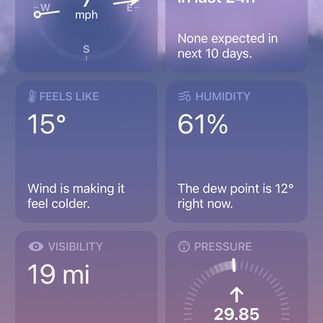



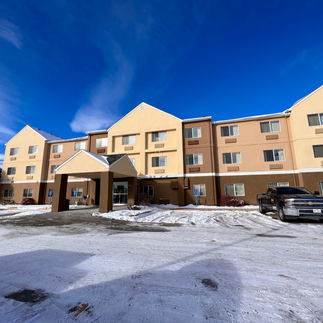













































































































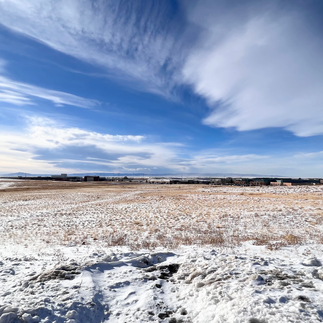





























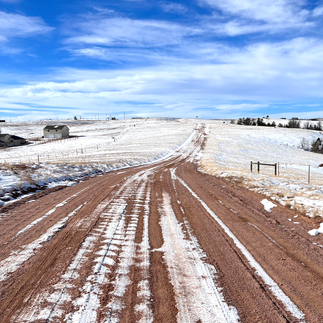



















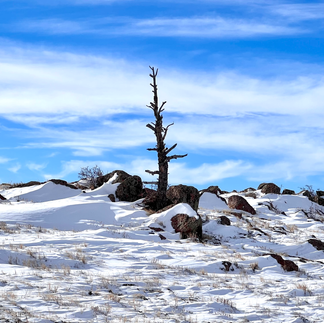












Play-by-play....
Was hoping for a retort from Curt Gowdy State Park....